How to Tell If my String of Hearts Is underwatered?
String of Hearts or Ceropegia woodii is a vining plant that can be cared for as a succulent plant.
Of African American descent, String of Hearts hails from the Apocynaceae family according to Wisconsin University. These plants are not all leaves.
Some of their trails flower as well, the stems producing magenta-colored small tubers usually in springs and summers.
Trailing plants are fragile as their length can make transport of water throughout difficult. As a result, you may end up underwatering the String of Hearts.
However, there can be other causes.
Table of Contents
How to Tell If My String of Hearts Is Underwatered?
Your String of Hearts is underwatered if its leaves are shriveled, the edges brown and crisp. Yellowing of leaves is also a potential sign. If leaves are not supple to the touch, your String of Hearts needs water. If you notice the vine stops growing, this is also a sign your plant is underwatered.

5 Symptoms of an Underwatered String of Hearts
As a succulent, the String of Hearts is capable of adapting to hot and dry climates. Even with their ability to withstand infrequent rainfall, they can eventually dry out if ignored for too long.
Let us explore some of the symptoms of underwatered String of Hearts.
1. Shriveling, Browning Leaves
A week or so after neglect, the leaves of your String of Hearts will begin to dry out. They store water in their vines that can sustain them, but it won’t last long.
Once their reserves start to deplete, the ends of the leaves will start to shrivel. Leaves are the kitchens of plants, if water and other nutrients are the ingredients.
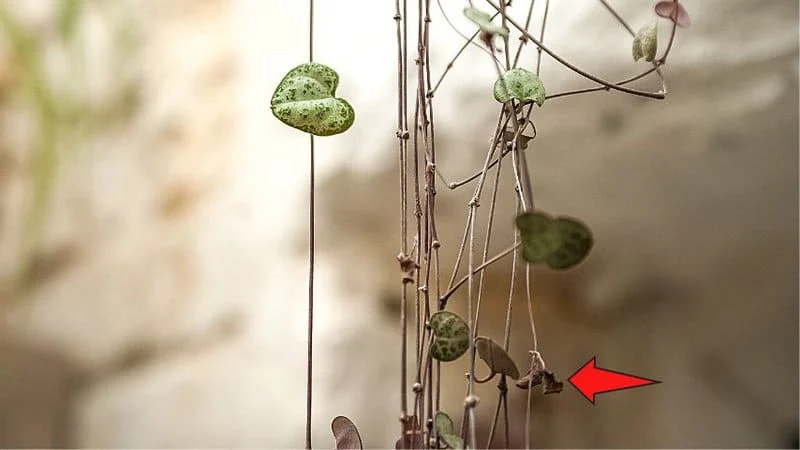
They are the first thing that experience loss of water since they are the last to receive it.
Along with the shriveling, the leaves will begin to brown as well. If you see both of these symptoms, know that your String of Hearts is severely underwater.
2. Stagnant To No Growth
Vine plants grow around their support relatively faster. With an underwatered String of Hearts, stagnant to no growth will be one of the first few symptoms you will see.
This is similar to the no-growth phenomenon seen in Snake Plants.
The last end of the vine will show signs of dryness: discoloration, and yellowing. When your vine has shown no growth around its support for over two weeks, the leaves are not getting enough water.
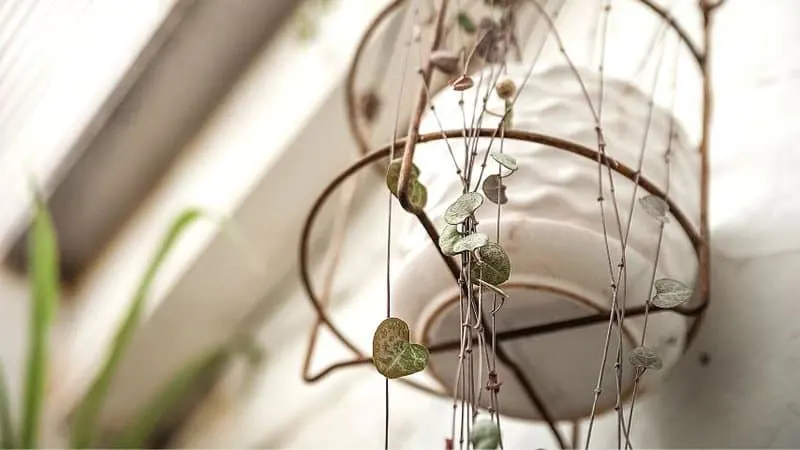
Maybe it is getting too much sun. Either way, the plant will burn when underwatered.
3. Sagging String of Hearts
Your heart-shaped string sags when dehydrated. Your plant’s vascular system, which is similar to hydraulics in that it contains water, aids in keeping it upright.
Your plant will slump if you don’t give it that extra support.
Skipping more than four waterings causes the droopiness to start suddenly. The majority of the time, owners want to avoid watering their String of Hearts too much, resulting in overwatering.
But they actually end up underwatering them in the process. With too much light and not enough water, the plant won’t have enough of its nutrients to maintain health and uprightness.
If your String of Hearts is drooping and sagging, it is high time to water it.
4. Dry Soil
A String of Hearts plant’s soil will feel dry if it is underwatered, while overwatered soil will feel damp.
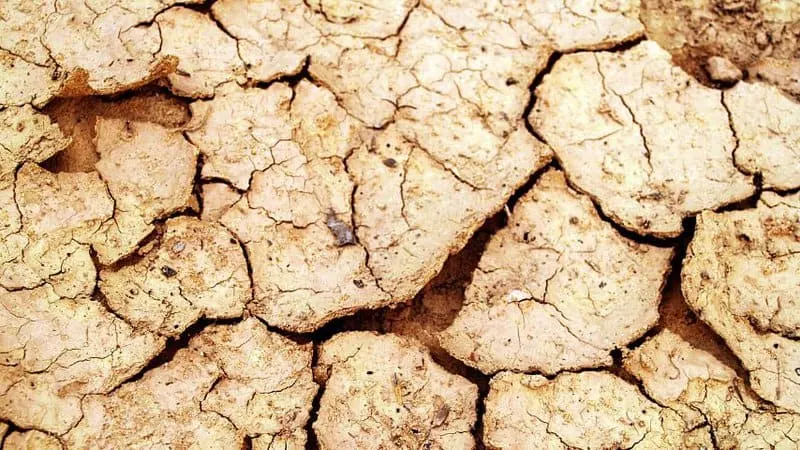
In order to evaluate the symptom that the String of Heart has (such as leaf browning) is the result of over- or underwatering, dip your finger in the soil’s top inch and feel it for wetness or dryness.
5. Shrinking Leaves
A chain of hearts plant, when underwatered, experiences a reduction in the size of its leaves.
The plant normally uses this as a natural defense mechanism to decrease the surface area of its leaves and so lower the amount of water that evaporates.
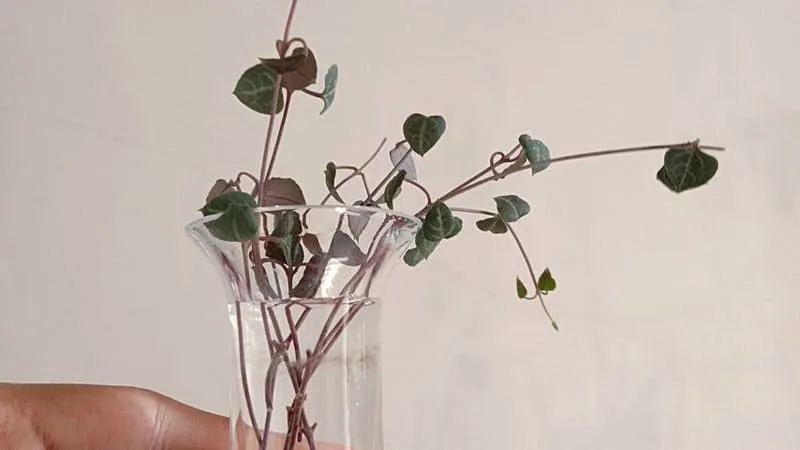
The overwatered String of Hearts’ leaves, on the other hand, typically maintain their size while becoming discolored.
Small, shrinking leaves are an indicator that your String of Hearts is underwater. You must quench its thirst immediately.
Saving an Underwatered String of Hearts Plant in 3 Ways
In your attempt to prevent overwatering, you will end up underwatering your String of Hearts. These plants have excessive microscopic reserves of storing water. However, in case you find your String of Hearts facing underwatering, refer to the steps below to revive your dying succulent.
1. Safely Remove the Damaged Leaves
Remove any damaged leaves. Go about this gently — use a pair of clean, sanitized shears as anything else might damage the plant.
Remove everything and anything that has turned yellow or brown.
Certain green leaves might not be discolored yet, but they will if proper care is not taken. Besides, removing these damaged leaves just might help propagate the string.
New leaves need room to grow and the removal will help by leaps and bounds.
2. Relocate Your String of Hearts
The String of Hearts plants that have been sunburned can only be revived by moving them to an area of indirect light to prevent future sun damage and by trimming off any damaged leaves that won’t heal.
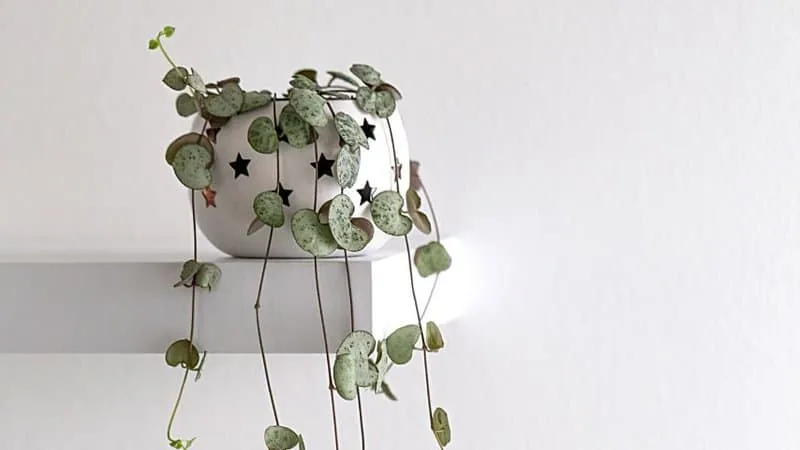
Trimming back stems with damaged leaves should encourage further development and help the plant recover over the coming weeks.
Move the String of Hearts a little at a time if you’re transferring it to a more sunny spot.
To allow your String of Hearts’ leaves to adjust to more sunlight, move the plant progressively to the sunnier location for 3 weeks for a half-hour longer every 3 days.
3. Change Potting Soil
Potting soil is an additional crucial component. The soil can become hard when it dries out entirely if the String of Hearts is put in regular potting soil as opposed to succulent and cactus soil.
The soil can become completely dry. This can lead to the soil becoming hydrophobic, which prevents water from penetrating the soil surface and reaching the roots.
Even if you may give your String of Hearts a nice soak and water may drip from the base, the drought stress is still evident as the water hasn’t permeated well into the soil and reached the plant’s roots.
Change the potting soil, then. Opt for something heavier and moist.
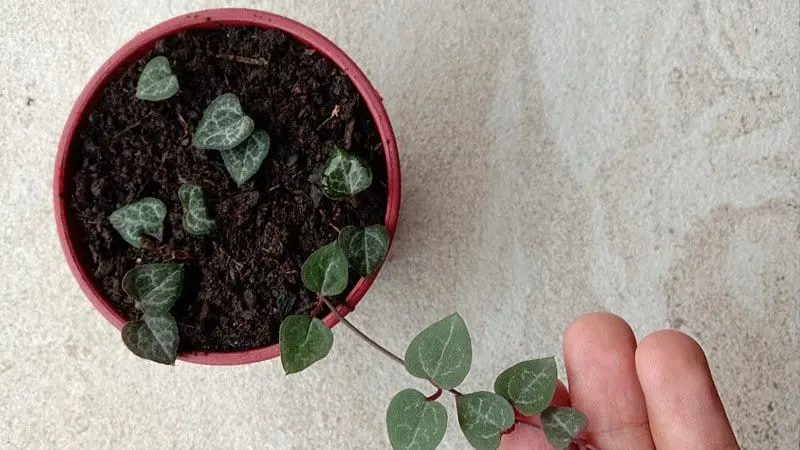
Frequently Asked Questions About Underwatered String of Hearts
How Often Should I Water My String of Hearts?
Water your String of Hearts once or twice a week during the summer and spring seasons. Water it every 2 weeks during the winter and fall season when it is dormant. Make sure that the soil’s thoroughly dry before watering it again. Overwatering can cause root rot and the yellowing of leaves.
How Much Light Does My String of Hearts Need?
Keep your String of Hearts in an area with strong light with some direct sun (but not all day) for the best leaf color and variety. The likelihood that the plant is not receiving enough light increases if you detect wide areas between the leaves.
Is My String of Hearts Underwatered?
Due to the succulent nature of the String of Hearts plant, they prefer drought periods between waterings. The plant is ready for watering when its soil’s dry 2/3 of the way down the pot.
Conclusion About Underwatered String of Hearts
An underwatered String of Hearts has crisply and brown leaves and leaf edges. In addition, leaves may turn yellow and might fall off when touched. Lastly, the String of Hearts plant might stop growing. To remedy the situation remove the damaged leaves, change the potting soil and move the plant to a new location. Most importantly, adhere to a consistent watering schedule.

Daniel has been a plant enthusiast for over 20 years. He owns hundreds of houseplants and prepares for the chili growing seasons yearly with great anticipation. His favorite plants are plant species in the Araceae family, such as Monstera, Philodendron, and Anthurium. He also loves gardening and is growing hot peppers, tomatoes, and many more vegetables.


